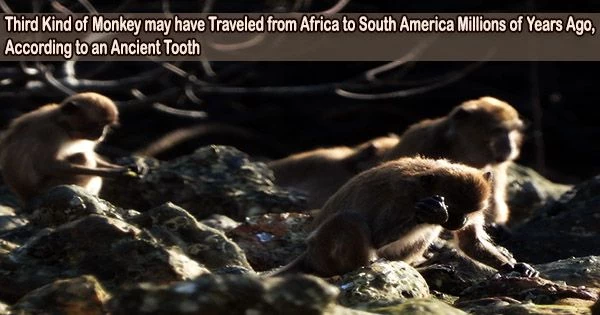Evidence of a third species of monkey traveling from Africa to South America millions of years ago has been discovered by a team of paleontologists from France, Brazil, and Argentina.
The team explains a tooth they discovered embedded in rock along the Juruá River in Amazonian, Brazil, and their hypotheses regarding where its former owner could fit in the animal kingdom in their research that was published in Proceedings of the National Academy of Sciences.
The teeth was a single molar with cusps that indicated it belonged to an eosimid (a presumed extinct family of primates), an extinct primate, and both. According to research on the teeth, it presumably belonged to a little species that was similar in size to a modern marmoset. Like a marmoset, it probably also enjoyed eating fruits and insects for food.
Additionally, the scientists discovered evidence that the monkey was not one of the two main clades of monkeys known to have crossed the Atlantic Ocean from Africa to South America about 34 million years ago. That made it an unknown primate taxon, with a possible associated clade.
The research team named the new taxon Ashaninkacebus simpsoni. Additional analysis revealed that the newly discovered tooth most likely belonged to a monkey that lived during the transitional era between the Eocene and the Oligocene.
The scientists CT scanned the old monkey’s teeth and compared the results to scans of other simian primates to understand more about where the ancient monkey may have slotted in with other monkeys in the animal kingdom. They found similarities between A. simpsoni and extinct species that used to live in what is now South Asia.
After that, the team performed a phylogenetic study, contrasting the novel taxon with South American monkeys and Old World anthropoids. They discovered that at least one member of the taxon, possibly more, traveled across the ocean.
According to earlier studies, a monkey may travel this distance by riding a raft of vegetation that was carried across the ocean by a powerful storm. The discovery of a new family of monkeys traveling across the ocean indicates that it was probably more common than previously believed.
















